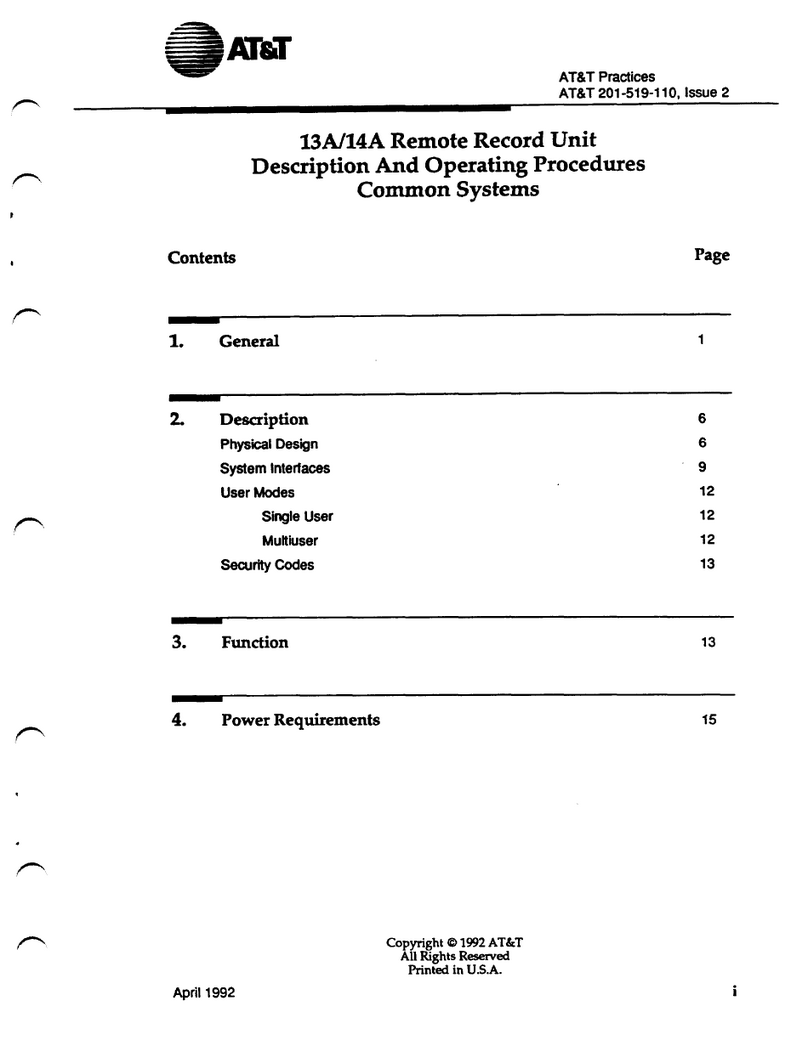
TCI Library https://www.telephonecollectors.info/
accurate reading, The test may be made by ei-
ther of two methods; by -short-circuiting the
capacitor to full? discharge it and then making
connection to the meter; or, by reversing the
polarity of the connections from the meter to
the capacitor, without intermediate discharge
of the capacitor, The latter method requires
the use of an auxiliary switch inserted in the
connections between the meter and capacitor
as
shown in Fig. 9. When the short-circuiting
method is followed, no auxiliary switch is re-
quired; however, if desired, a switch may be
used in the test leads to discharge the capac-
itor and then reconnect it to the meter, in
order to simplify the procedure (see Fig. 8),
The reversing switch method, covered in Para-
graph 3.
18,
should not be used for electrolytic
capacitors, since a single polarity should be
used v1hen testing this type of capacitor; that
is, the(+) or X terminal of the meter should
alv1a,rs connect to the (+) terminal of the ce-
pacitor. When using the reversing method, the
magnitude of the pointer swing is approximately
double that obtained after shorting the capac-
itor. The dotted curves Band B• in Figs, 6
and
7
are provided for use when the reversing
switch is employed, and solid curves A and A•
when the short-circuiting switch is used,
3.16
The table below summarizes the connec-
tions which may be used for various
values of capacitance, and the curves which
are appl~cable for the testing procedure used.
The A' and B' curves in both Figs.
6
and
7
correspond to the lower portions of the A
and
B curves respectively, but are plotted on
a
larger scale for easier and more accurate
reading of the smaller values of capacitance,
It is therefore preferable to use curves A• or
B• if the pointer swing is low enough to be
read on them.
3.17
Electrolytic Capacitors. Before measur-
ing the capacitance of electrolytic ca-
pacitors which have not been in service for
e.n
extended period,the film should be restored by
connecting the ce.paci tor to a d-c voltage ap-
proximating the normal working voltage of the
capacitor, in series with a lamp, for about
30
minutes, If a capacitor is tested in the cir-
cuit, and there are any shunting paths around
the capacitor, at lee.st one terminal should be
discom1ected before proceeding.
Capacitance Pin Jack
Range Connectiors
0,1
to
2.0 mf
X
and Rxl000
2.0
to
20 mf
(X
and Rxl000
(
or
(X and RxlO0
20
to
200 mf X
and Rxl00
Fig,
6
6
7
7
155 1, SECTION100-513-101
3.18
Procedure, The following procedure for
measuring capacitance is to be followed
when neither
a
sho~t-circuiting switch nor
a
reversing switch is to be used, r'hen a short-
circuiting switch or a reversing switch is
used, the procedure given below is modified as
covered in Paragraph
3,20
or
3.21.
(1) For higher capacitance measurements,
use the X and Rxl00 pin jacksJ for
lower capacitance measurements, use the X
and Rxl000 pin jacks (see Paragraph
3.16).
(2) Set the meter switches to their DC and
RES positions, connect the test cords
to the meter jacks to be used and adjust
the setting of the BATTERYADJUSTMENTknob
for zero reading on the resistance scale
(as covered in Para~raph
3.09),
(3)
Connect the test lead from the X pin
jack to one terminal of the capacitor
(if the capacitor is electrolytic, connect
this lead to the positive terminal).
(4)
With the other test lead disconnected
from the meter, connect its clip end
to the other capacitor terminal (negative,
if capacitor is electrolytic),
(5)
Then, quickly insertthe other terminal
of this test lead into the Rxl00 or
the Rxl000 pin jack, at the same time
watching the meter needle to determine its
maximwn swin~.
If
this oonneotion is not
made quickly a full swing of the pointer
will not be obtained,
(6)
Read the maximl.Ull swing on the
0-150
(upper) scale and convert the reading
to microfarads by use of the solid curv~s
A or A• in Fig,
6
or
7;
use Fig.
6
for
connections to the X and Rxl000 jacks; use
Fig.
7
for X and Rxl00 connections.
(7) To repeat the test, remove the
lead
from the meter Rxl00 or the Rxl000
jack, touch it to the capacitor to short-
circuit and discharge it, then rel?eat the
~onnection to meter, as in Items
(5)
and
(6) above.
Aoolicable Curve
Short Get, Rev. Sw,
Method- Method-
Solid Curve Dotted Curve
A• B'
A
B
A'
B'
A
B
Page 7




























